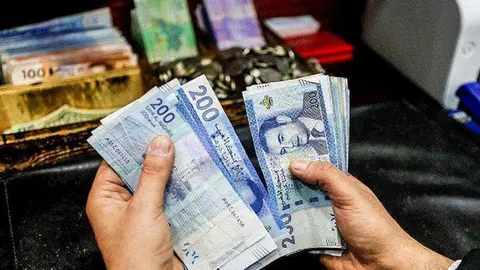
Morocco’s tax expenditures have risen to 32.1 billion dirhams in 2025,reflecting persistent challenges in the government’s efforts to rationalize fiscal incentives despite a broader reform agenda aimed at improving transparency and efficiency in public spending.
Tax expenditures as a percentage of GDP have declined from 2.9% in 2022 to 2.1% in 2024,primarily due to the abolition of 24 measures as part of VAT reform,resulting in a 28.3% reduction in VAT-related tax expenditures. However,the 2025 figures show a reversal of this downward trend,raising questions about the sustainability of rationalization efforts.
The evolution of these fiscal incentives has been marked by significant volatility. Starting at 28.42 billion dirhams in 2019,expenditures peaked at 38 billion dirhams in 2022 following pandemic-related economic stimulus measures,before declining to 35.4 billion dirhams in 2023 and 32.1 billion dirhams in 2024.
Morocco ranks 28th out of 105 countries in the Global Tax Expenditures Transparency Index with a score of 55.7 out of 100,with critics highlighting the absence of exhaustive impact studies and clear criteria for creating or removing incentives. The Court of Accounts has emphasized the need for rigorous evaluation of these measures’ effectiveness and their actual impact on economic development.
Value-added tax continues to dominate the composition of tax expenditures,accounting for 51% of the total at 16.3 billion dirhams in 2025,up from 47% in 2020. This concentration reflects extensive use of exemptions to support household consumption and stimulate domestic demand.
Total exemptions represent 73.1% of all tax expenditures in 2025,amounting to 23.4 billion dirhams,while reductions account for 18.2%. This structure demonstrates the government’s preference for direct incentive mechanisms to support priority sectors.
Three sectors absorb nearly 60% of tax benefits: social security and welfare (23.3%),real estate activities (17.3%),and electricity and gas (16.4%). Agriculture,financial services,and education each receive approximately 6% of total expenditures.
The distribution between economic and social objectives has shifted significantly. While economic purposes dominated in 2020 at 56.4%,social objectives now represent 52.5% of tax expenditures in 2025,illustrating Morocco’s reorientation toward social cohesion and inclusive growth.
The 2025 Finance Law concludes a three-year reform cycle aimed at modernizing the tax system,with provisions including raising the income tax exemption threshold from 30,000 to 40,000 dirhams and reducing the marginal tax rate from 38% to 37%.
The primary objectives for 2025 focus on mobilizing domestic savings (19.3%),supporting purchasing power (18.6%),and facilitating housing access (16.4%). These three priorities concentrate over half of all tax expenditures,emphasizing fiscal policy’s role in wealth redistribution and social stability.
United News - unews.co.za